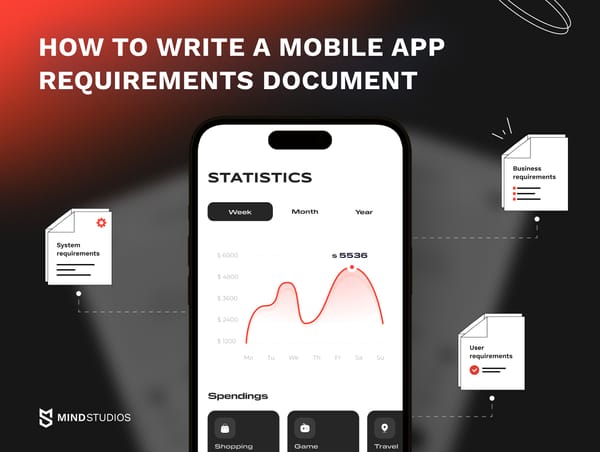Discover how logistics technologies like IoT, robotics, and mobile solutions are driving efficiency and solving critical challenges — with insights from Mind Studios' success stories.
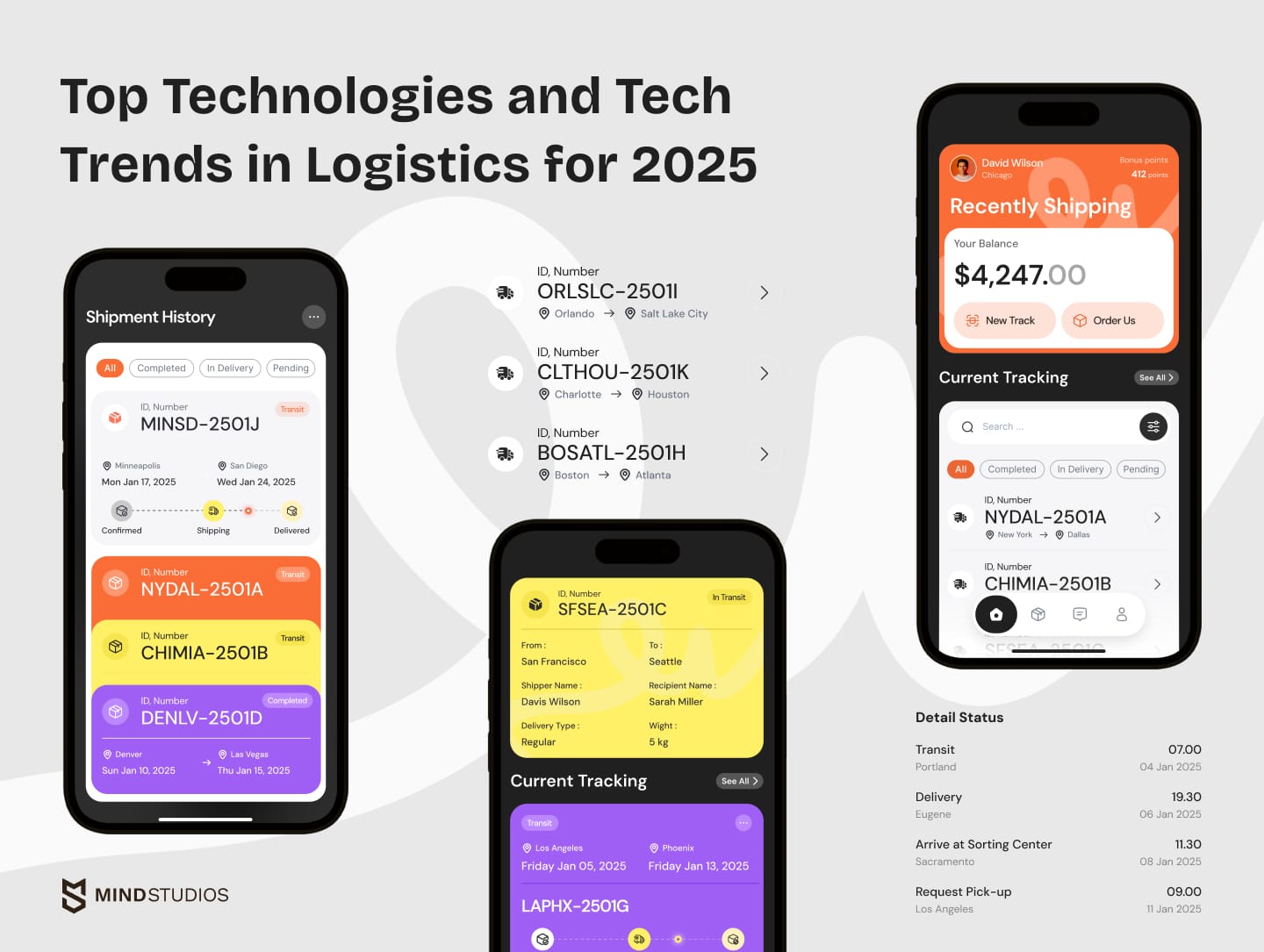
Today’s supply chains are operating within an environment unlike ever before: increasing costs of operation, demands for shorter turnaround times, and increased pressure. For logistics companies, the issue is how they juggle these needs and retain visibility while accommodating sustainability initiatives. Issues such as the need for operational technology solutions have become even more urgent — logistics technology trends like artificial intelligence route planning and smart internet of things-based real-time monitoring are responses to such challenges and serve to cut costs, minimize delivery times, and effectively satisfy the demands of existing consumers.
At Mind Studios, we specialize in delivering solutions to these challenges. For example, we built Pampr, a luxury delivery service in Nantucket. Within three months, we created a platform that successfully processed more than a thousand orders, helped customers to save more than two thousand hours, and gained the trust of 560+ frequent users. This is a clear indication of how the right tools can make a lot of difference.
In this article, we will look at the latest trends in logistics technology that will define the industry in 2025 and how companies can prepare for it by embracing change.
Highlights:
- E-commerce growth and complex supply chains push businesses to adopt order and parcel tracking.
- IoT and AI-driven solutions streamline routes and reduce costs for global logistics leaders.
- Mobile-first solutions dominate 2025 logistics strategies for customer-centric operations.
If you are interested in implementing new software for your logistics business, Mind Studios can assist you!

Logistics in 2025: Can your business afford to ignore new tech trends?
It is now impossible to overlook the developments in the field of logistics technology. E-commerce is still on the rise, supply chain is evolving, and customer demands are higher than ever.
With the global market for digital transformation in logistics projected to hit $75.5 billion by 2026, businesses must embrace innovation to stay relevant and competitive.
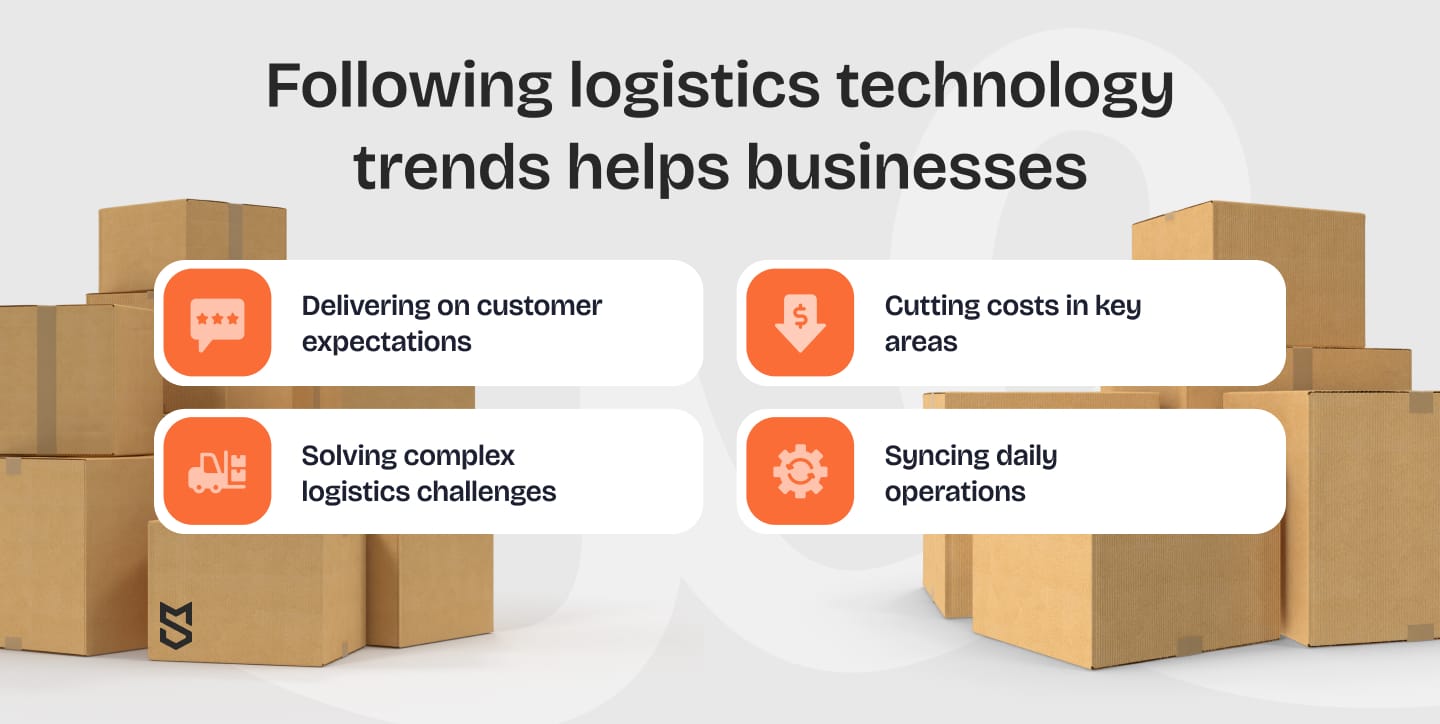
Delivering on customer expectations
The effectiveness of logistics operations increases annually, and the customers’ expectations rise as well. Today’s B2B and B2C audiences expect speed, visibility, protection, and openness of operations — often paired with environmental responsibility. Satisfying these expectations is a must in order to ensure loyalty is upheld.
How technology helps:
Automation: Improves efficiency of order processing.
Blockchain: Enhances security and confidence in the transactions.
Cutting costs in key areas
The primary goal of any technology in the logistics industry is to drive cost down, with differing results depending on the application.
Key cost-saving technologies:
- IoT: Minimizes cases of delivery failure through tracking of shipment.
- Route optimization: Reduces cost on fuel by developing a proper route plan.
- Warehouse automation: Reduces cost of labor by passing some repetitive tasks to robots.
ROI timeline: Some solutions, such as route optimization, can be evident within a year while other solutions, such as robotics, may require three years or more to give positive returns.
Solving complex logistics challenges
New to global trade and increasing delivery needs have brought some new problems, starting with long-distance shipments and ending with the rational use of resources.
Technology-driven solutions:
- Faster deliveries: The use of AI in route planning eliminates delay.
- Resource optimization: Internet of Things makes it easy to manage warehouses and fleets. Failure to do so will put one out of touch with the competitors and, thus, out of business.
Syncing daily operations
Since logistics operations are broken down into many small parts, the technologies have to support the integration of these parts across transportation, warehousing, fleet, and supply chains.
Game-changers:
- Cloud computing: Facilitates combined work of all the interested parties in real time.
- IoT sensors: Coordinate by providing valuable information about the stock, the health of the fleet, and much more.
Real world example
Supply chain and logistics – these are the fields that our company focuses on, and real-world cases like the one of Henkel are rather encouraging. It reveals that the process is no longer the exclusive to massive logistics providers, such as DHL or FedEx; it has become necessary for all. It shows how one company, Henkel, effectively approaches the implementation of technology as a way to reinvent operations, which is the approach that we take with every project that we design.
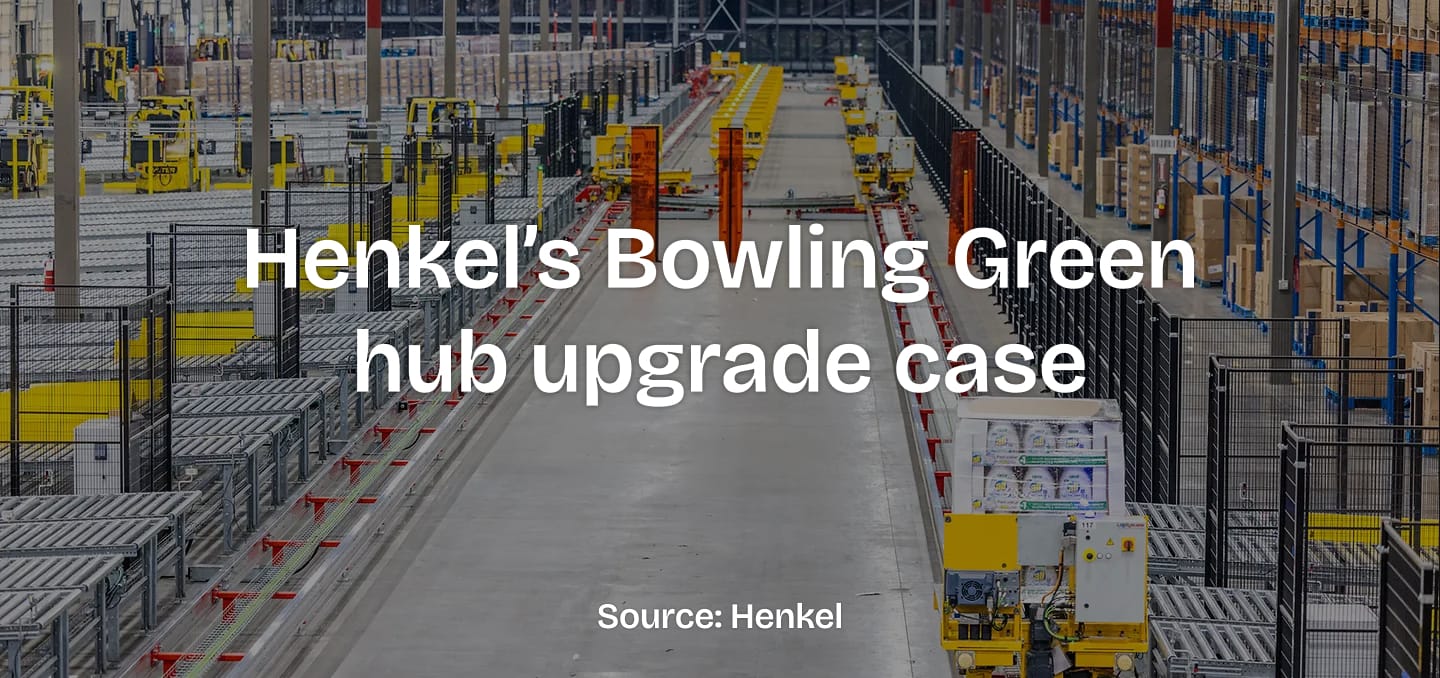
[Source: Henkel]
Henkel’s Bowling Green hub was grappling with outdated systems that couldn’t keep pace with the growing complexity of operations. Delays in processing, inefficiencies in resource allocation, and increased operational costs were beginning to impact profitability and customer satisfaction. To address these challenges and scale effectively, Henkel launched a $70 million transformation initiative aimed at modernizing its logistics processes, improving operational agility, and positioning the facility as a leader in supply chain innovation.
The challenges:
- Insufficient storage capacity and throughput.
- Outdated processes that slowed operations and data flow.
- Difficulty adapting to changing market demands.
The solutions:
- Revamped warehouse infrastructure to increase storage by 56%, handling 200,000 pallets.
- Integrated automation systems to improve workflow and reduce manual inefficiencies.
- Digital tools to enable real-time data exchange and operational agility.
The results:
Henkel’s hub now processes 1,000 trucks daily (an 80% increase), ensuring quicker turnarounds and reduced delays. The company’s forward-looking approach positions it as a leader in modern logistics.
What are the current trends in logistics?
As logistics grows more complex, businesses face mounting pressure to reduce costs, meet sustainability goals, and deliver faster than ever. In 2025, leveraging the right technologies will be the key to overcoming these challenges and staying ahead of the curve.
Robotics and automation
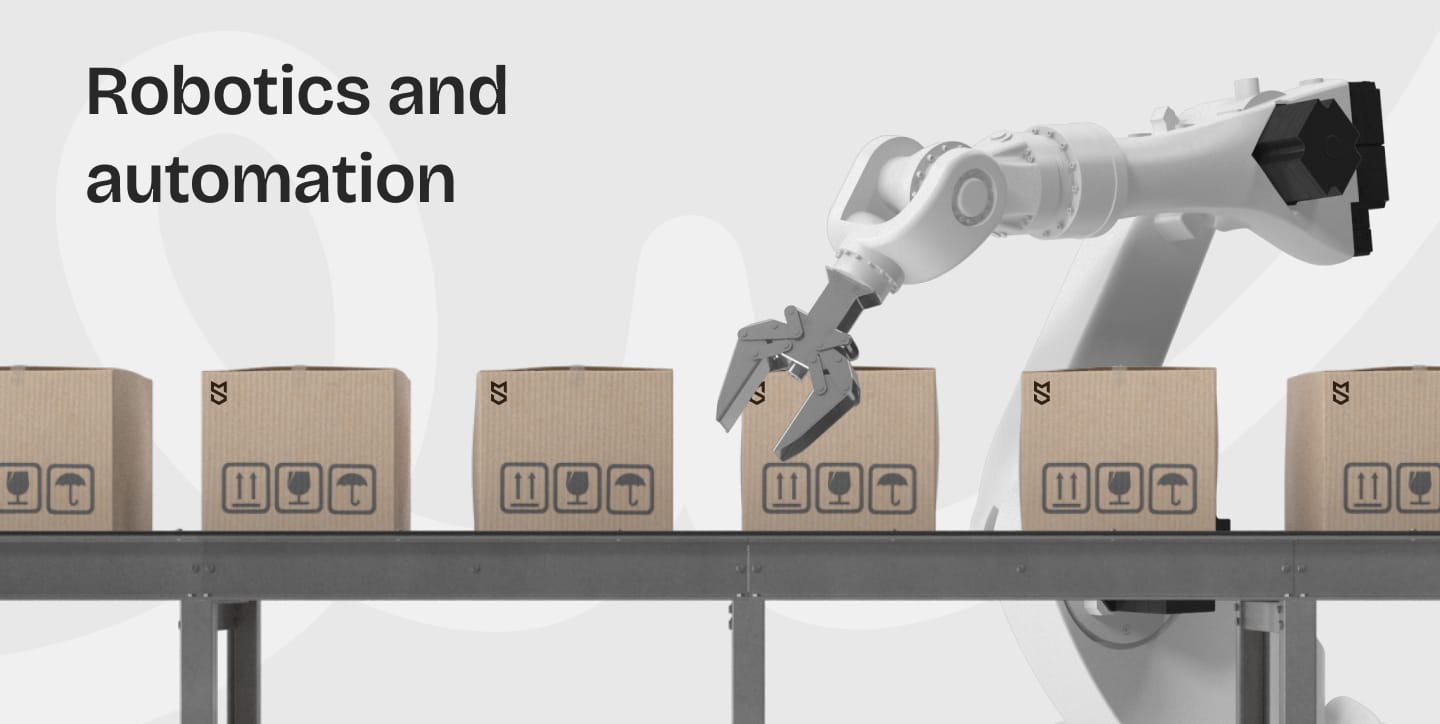
[Source: Boston Dynamics]
The rise of robotics is transforming how warehouses operate. Robots like Boston Dynamics' Handle automate repetitive tasks such as unloading trucks and moving heavy items, reducing human error and boosting productivity. By addressing labor shortages and streamlining operations, robotics has become an essential tool for scaling logistics processes.
Big data
The logistics sector is awash with data, from delivery times to inventory levels. Companies using big data analytics can identify inefficiencies, predict demand spikes, and plan smarter routes. It’s not just about crunching numbers; it’s about turning insights into actions that save time and money.
Internet of Things (IoT)
IoT technology is giving businesses a clearer picture of their supply chains. Devices like smart sensors monitor shipment conditions and vehicle performance in real time, enabling faster responses to potential disruptions. For industries like pharmaceuticals, IoT ensures that temperature-sensitive goods arrive safely and on time.
Must-have features for logistics applications in 2025
In the logistics industry, innovative technologies help with responding to the problems that arise every day. By 2025, applications intended for the logistics sector, should not only be functional but also be indispensable tools for increasing the efficiency of work and eliminating problems. These features should cater for the real-time communication needs, delivery workflow optimization for every affected party — drivers, managers, and customers.
Here are the essential features that every logistics application should prioritize to ensure success across the board:
Category |
Essential features |
|---|---|
Drivers |
|
Managers |
|
Customers |
|
These features not only improve operations but also enhance user experience across the board.
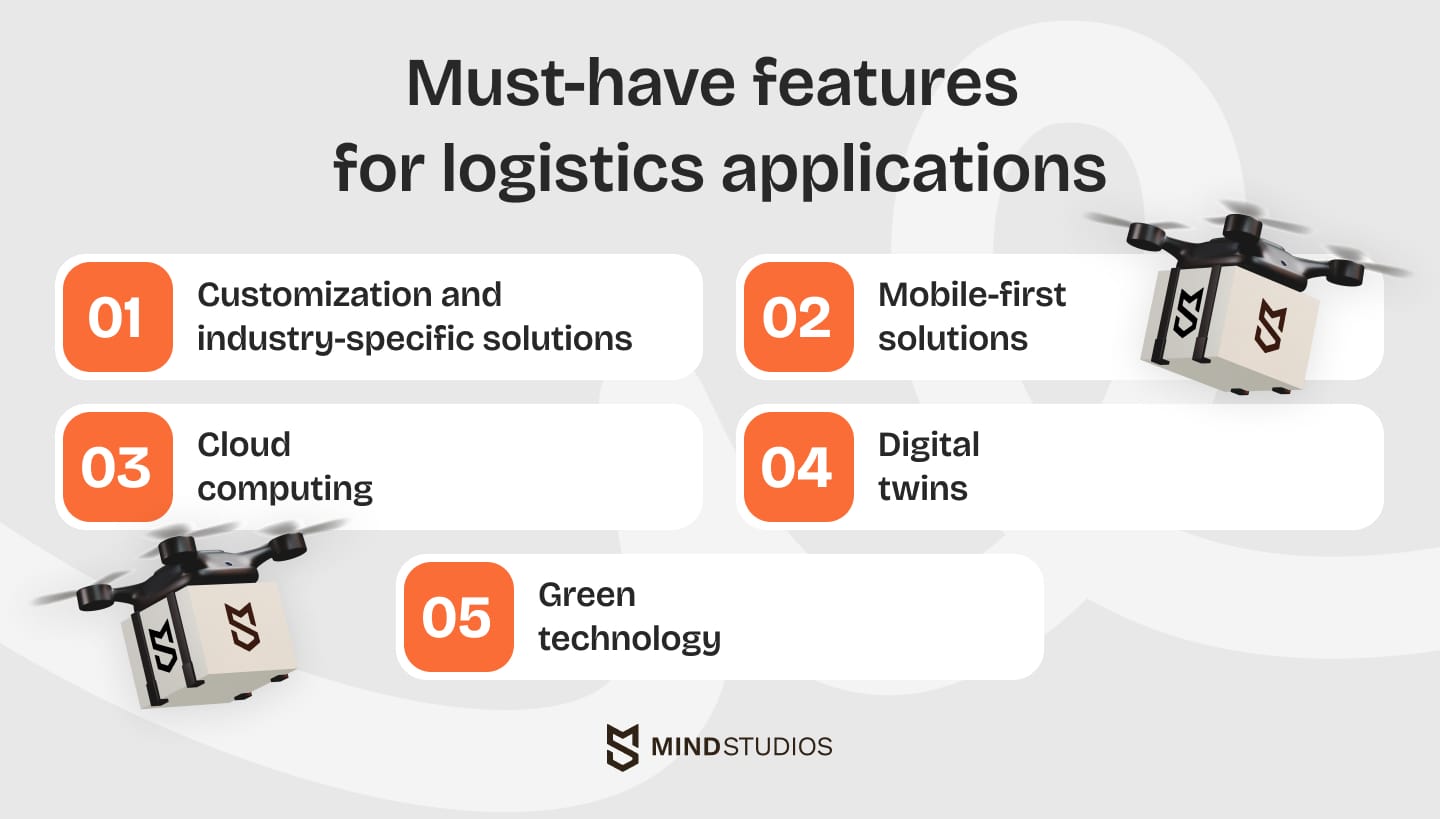
Customization and industry-specific solutions
No two industries are the same, and neither are their logistics challenges. That’s where tailored solutions come in.
Mind Studios has proven expertise in crafting custom logistics software. For example, the James delivery app streamlined last-mile logistics in Denmark by tailoring features to local market needs. By reducing delays and optimizing routes, it helped improve delivery efficiency and customer satisfaction. Custom solutions don’t just address current pain points — they prepare businesses for what’s next.
Mobile-first solutions
In a world where everything is mobile, logistics apps need to prioritize user-friendly, on-the-go solutions. These tools simplify operations and keep everyone — drivers, managers, and customers — connected.
With Pampr, we built a mobile-first platform that allowed users to schedule deliveries, track orders, and communicate in real time. The result? Faster deliveries, better communication, and more satisfied customers. Mobile-first isn’t just a trend — it’s the new standard.
Cloud computing
Cloud technology is redefining logistics by enabling seamless data sharing and collaboration. These platforms are scalable, cost-effective, and allow businesses to adapt quickly to changing demands. Whether it’s tracking shipments or managing inventory, the cloud keeps everything running smoothly.
Digital twins
Digital twins let businesses test logistics processes in a virtual environment before implementing changes. By simulating scenarios, companies can identify inefficiencies and avoid costly mistakes, paving the way for smarter decision-making.
Green technology
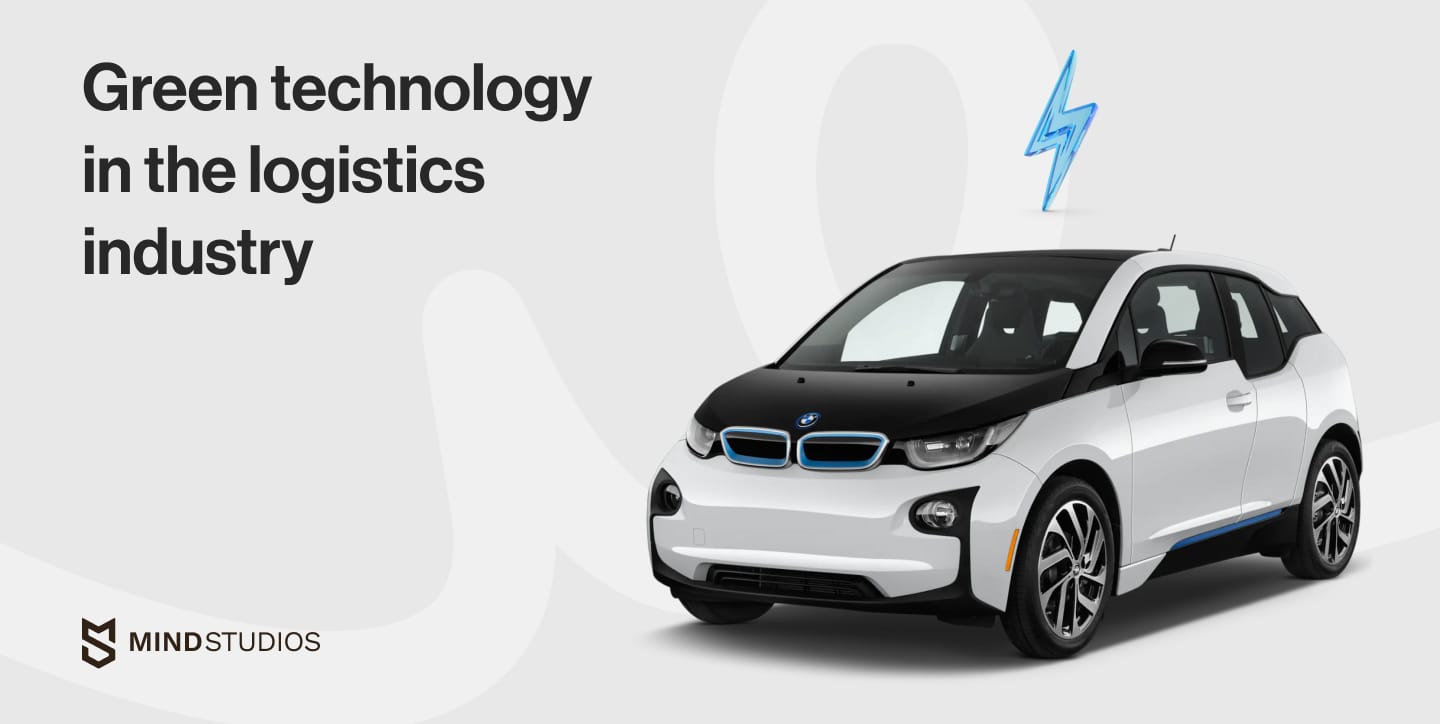
Sustainability is at the forefront of logistics innovation. From electric delivery fleets to optimized route planning, green initiatives are helping companies reduce emissions and save on fuel costs. DHL’s investment in fleet electrification highlights how the industry is prioritizing eco-friendly solutions.
The forecasts in logistics technologies for the near future
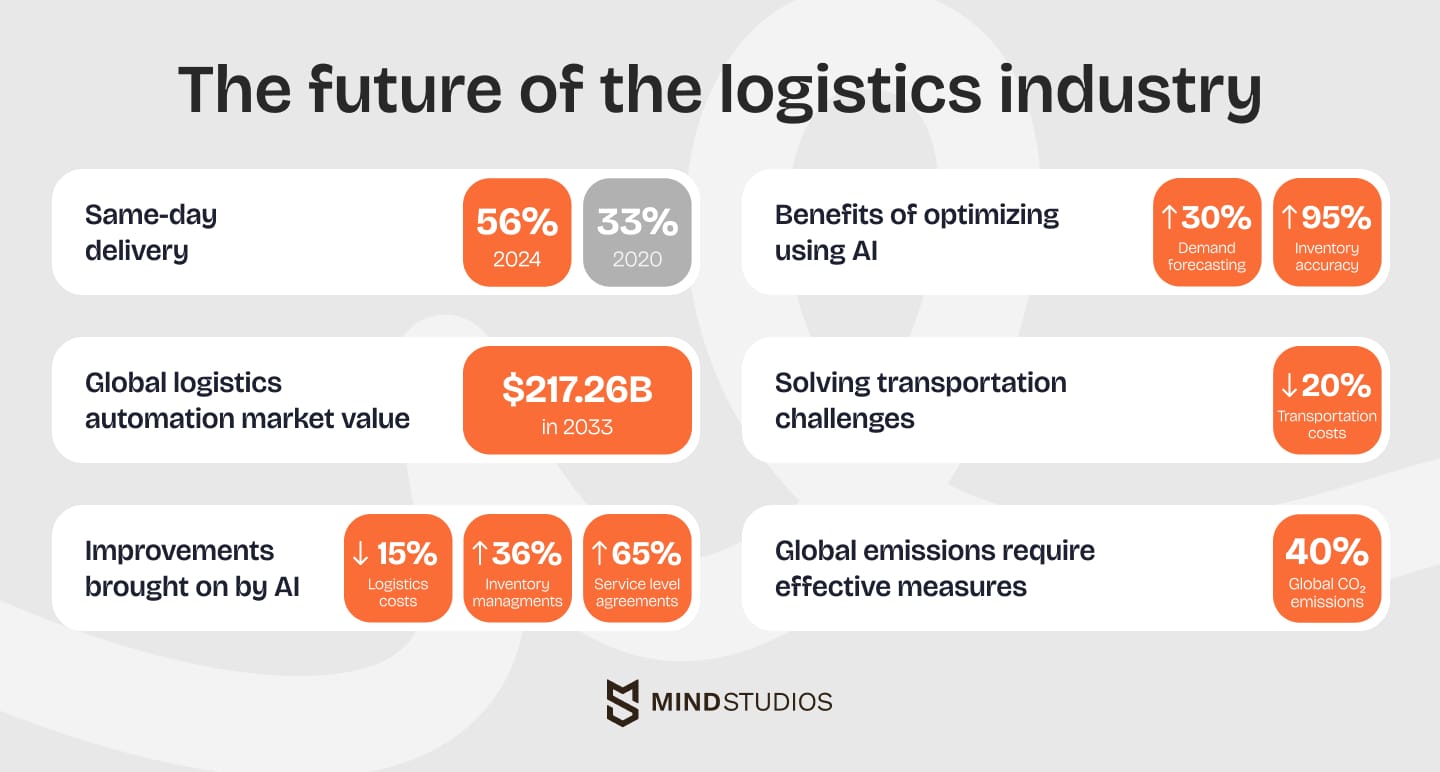
Recent years have put logistics under immense pressure. Supply chains faced fires at factories — over 1,600 reported in early 2023 alone — causing ripple effects across industries. Labor unrest, from strikes to worker shortages, intensified these challenges, delaying operations and stretching resources thin. According to Resilinc’s reports on supply chain disruptions, these findings reflect detailed data collection and analysis from a wide array of industries.
How are companies adapting, though? They're turning to strategies that build flexibility into their supply chains:
- Decentralizing suppliers: Spreading production reduces reliance on single facilities, minimizing risk during disruptions.
- Risk monitoring technology: Advanced tools now detect and address vulnerabilities faster than ever.
- Reevaluating workforce needs: Better planning and training prevent staffing shortages from derailing timelines.
The message is clear: resilience isn’t optional anymore — it’s survival. Smart strategies are keeping logistics moving, even when the unexpected strikes.
Naturally, the latest technology trends in logistics industry, are one of the keys to developing that resilience and preparing businesses for future challenges. But how deeply will these technologies be embedded into the industry?
Let’s take a look at some of Gartner’s predictions about the development new logistic technologies:
- By 2026, around 75% of large enterprises will have integrated some form of intralogistics smart robots into their warehouse workflow;
- Through 2025, 25% of decisions related to the supply chain will be made through intelligent edge ecosystems (a computing model where data is processed near its source, unlike traditional cloud computing that relies on centralized data centers);
- By 2026, over 75% of commercial supply chain management application vendors will offer advanced analytics, artificial intelligence, and data science functionality.
Automation is reshaping logistics, with tools like GPS tracking, drones, and warehouse robots becoming the norm. These technologies boost efficiency, but they’re not the whole story.
Thomas Jorgensen, President & CEO of Green Worldwide Shipping, shared in Forbes how automation has improved logistics: “Warehouse automation — including robots, self-driving machinery, tracking codes, and automated storage and retrieval systems — has achieved significant efficiencies and cost savings.” Despite this, people still play a key role in keeping operations running smoothly.
To stay ahead, businesses need to combine the best of both worlds: technology to streamline processes and human expertise to solve challenges like sustainability and supply chain disruptions.
Logistics technologies implemented by Mind Studios
Over the years, at Mind Studios, we developed various software solutions tailored to the logistics industry, solving unique challenges and driving measurable success. Here are some of our most notable projects:
Pampr: Redefining vacation logistics

When Pampr needed a platform to streamline personal shopping for vacationers, they turned to Mind Studios. With a tight two-and-a-half-month deadline, we delivered a platform that exceeded expectations.
- Challenge: Create a fully operational platform within an unyielding timeline while maintaining high performance.
- Solutions introduced: Features like real-time order tracking, scheduling, and direct user-service provider communication.
- Results:
- Over 1,000 orders processed in the first season.
- Saved vacationers more than 2,000 hours.
- Built a loyal base of 500+ regular customers. Pampr’s success positioned it as a leading luxury delivery service and paved the way for expansion into neighboring regions.
ERP system: Efficiency for a delivery company
This project aimed to modernize and optimize a delivery company’s operations through digitalization.
- Challenge: Lack of transparency and inefficiencies in managing delivery processes and costs.
- Solutions introduced: A comprehensive ERP system that included:
- Automated odometer registration.
- Cost-efficient route calculations.
- Real-time data sharing with supervisors.
- Results: A drastic reduction in operational overhead and improved delivery accuracy, ensuring sustainable growth.
James: Revolutionizing on-demand delivery in Denmark

We partnered with James to develop an on-demand delivery app tailored for the Danish market.
- Challenge: Build two fully functional apps (for buyers and shoppers) in just three months.
- Solutions introduced: Real-time order tracking, seamless delivery management, and user-friendly interfaces.
- Results:
- Transformed local delivery operations with hundreds of daily deliveries.
- Inspired public recognition with a Danish electro-pop singer Medina joining the board. James stands as a testament to how technology can elevate logistics efficiency and market presence.
M3Cargo: Enhancing cross-border logistics
M3Cargo, a Ukrainian logistics company specializing in imports from China, needed a solution to improve transparency and monitoring.
- Challenge: Ensure real-time visibility of shipments across complex supply chains.
- Solutions introduced:
- Developed the Real Tracking app, integrating GPS devices for live shipment monitoring.
- Enabled customers to track orders at every step of the process.
- Results: Greater transparency for clients, reduced delays, and more secure cargo handling.
Conclusion
Gartner’s 2024 strategic technology trends emphasize AI systems, sustainable solutions, and platform engineering as critical for reshaping the logistics industry. strategic technology trends in logistics industry emphasize AI systems, sustainable solutions, and platform engineering as game-changers for the logistics industry. At Mind Studios, we’re not just observing these trends — we’re implementing them to solve challenges like delivery inefficiencies, inventory mismanagement, and rising operational costs.
The trend towards a more complex logistics environment is rising steadily. By and large, the supply chains are leaning against various challenges originating from events all over the world, increasing and unstable customer demands. To sustain their competitiveness organizations need to embrace and invest in the infrastructures for demand forecasting analytics, IOT technologies for tracking real-time status, automation to eliminate human errors, as well as for scaling solutions.
What’s next? Evaluate which of these technologies align with your goals and budget. Prioritize solutions with high ROI, such as route optimization or automated inventory systems as a start. At Mind Studios, we specialize in tailoring these solutions to fit your unique business needs. Contact us today and let’s transform your logistics operations into a future-ready powerhouse.
If you’re looking for tailored logistics solutions designed to meet your business's unique needs, Mind Studios is here to help. Contact us today for a free consultation, and let’s start building a more agile, future-ready logistics system.

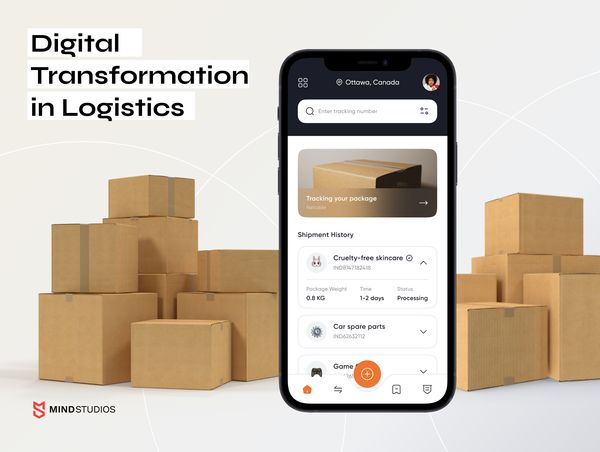
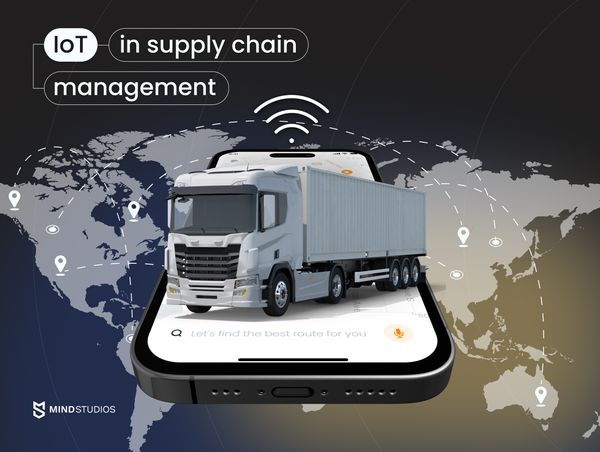


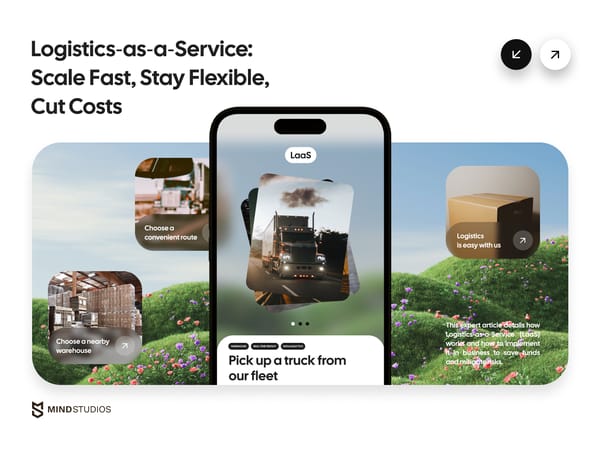
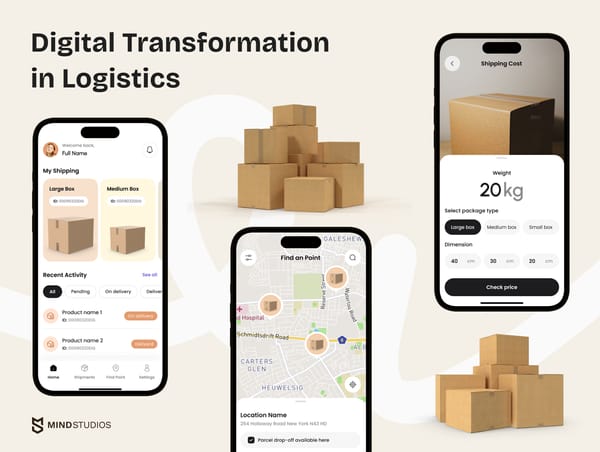
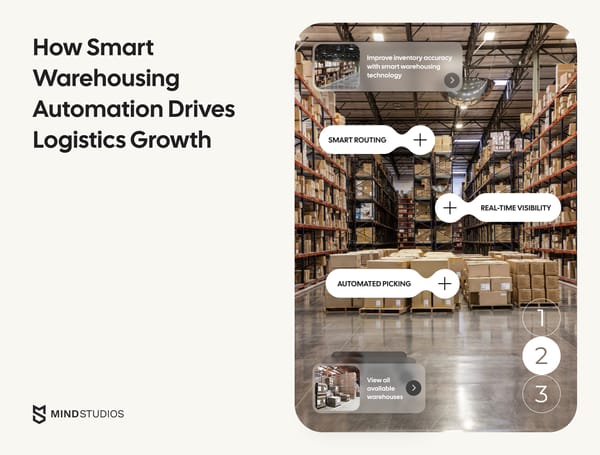
![How to Create an On-Demand Medicine Delivery App [Expert Guide]](https://themindstudios.com/blog/content/images/size/w600/2025/03/IMG-1-Cover-6.jpg)

